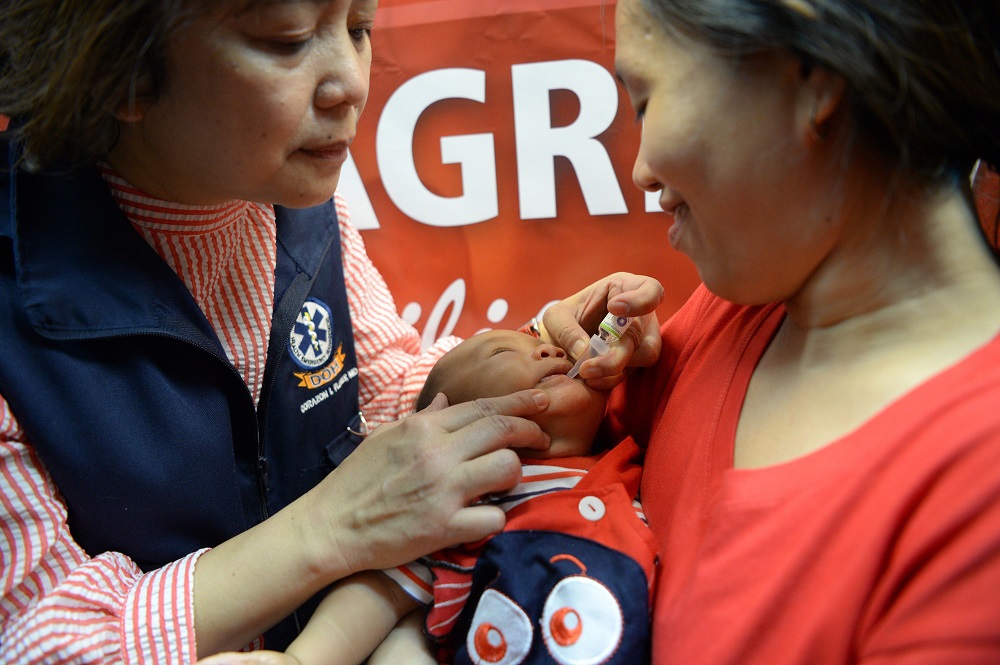WHO Confirms That Sabah Polio Case Came From The Philippines
A three-month-old baby was confirmed to have contracted poliovirus on 6 December, the first case in Malaysia in 27 years.
Days after Malaysia's first polio case in almost 30 years was reported, it has been confirmed that the poliovirus came from the Philippines
In a joint statement, the World Health Organisation (WHO) and the United Nations Children's Fund (UNICEF) said the first polio case in Malaysia in nearly three decades has similar genetic characteristics to the polio outbreak cases in the Philippines.
The southern Philippines was declared as a polio-infected area on 19 September 2019.
Last week, a three-month-old Malaysian infant was diagnosed with polio, marking a grave resurgence of the potentially deadly infectious disease in the country.
The discovery was made after a lab test showed that the baby's poliovirus was traced to the Acute Flaccid Paralysis (AFP) syndrome that is similar to the cases in the Philippines
The baby from Sabah developed fever and paralysis on 26 October, before being diagnosed with polio on 6 December, reported New Straits Times.
Malaysia's WHO representative Dr Ying-Ru Lo said the presence of polio - or poliomyelitis in full - in the country is deeply concerning.
"WHO is ready to support the Health Ministry in responding to this outbreak and in ensuring children in Malaysia receive the full protection of polio vaccines," said Dr Lo.
The WHO has also confirmed that there are currently at least nine reported polio cases in the Philippines
According to Bloomberg, both Malaysia and the Philippines are embarking on an aggressive polio immunisation drive to prevent the virus from spreading further.
The strain of the poliovirus currently being spread - called circulating vaccine-derived polio (cVDPV) Type 1 - strives in a seriously under-immunised community.
Health director-general Datuk Dr Noor Hisham Abdullah said vaccination rates need to be above 95% to contain the virus
The disease has no cure and the only way to prevent it is through vaccination.
Ministry of Health Disease Control Division public health specialist Dr Rohani Jahis said while one in four affected victims will only have flu-like symptoms, only 0.5% will develop a permanent disability, reported Bernama.
However, Dr Rohani said affected victims will carry the disease around through their faeces.
She added that the virus is still endemic in Nigeria, Afghanistan, and Pakistan.
WHO and UNICEF are urging parents to get their children vaccinated, especially those below the age of five as they are most at risk of the deadly disease
The residential area of the three-year-old child who contracted the poliovirus in Tuaran, Sabah.
Image via Khairull Azry Bidin/New Straits Times"Polio vaccines are extremely safe and effective, and have resulted in reducing cases of polio globally by over 99%," the organisations said in a statement.
"Polio vaccines must be administered multiple times to stop the outbreaks."
In 1992, Malaysia reported the last polio case, before the country was declared polio-free in 2000 along with other countries in the Western Pacific region.



